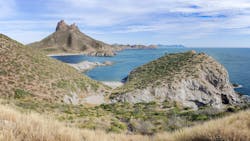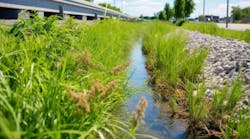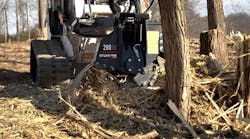Not all solutions to control erosion and sedimentation will stand the test of time. Buffelgrass is a drought-tolerant, perennial grass native to Africa that was brought to America in the 1930s to help limit erosion, according to the US Geological Survey. Now, however, it's considered an invasive weed that threatens to turn the Sonoran Desert from a diverse ecosystem into a grassland monoculture, putting the desert at risk of large, fast-moving wildfires.
Land managers' attempts to control the weed are often met with mixed results. In order to gain a better understanding of the best techniques for controlling buffelgrass, researchers from the University of Arizona conducted a review of the current literature, published in the journal Invasive Plant Science and Management. The authors examined the results from 229 studies in 42 unique sources, conducted in a variety of ecosystems and on several continents.
They categorized the results into 10 different treatment types, which included herbicide, seeding, manual removal, fire, grazing, biocontrol, and combinations of several treatment types.
The findings suggest that the most effective controls are when a combination of techniques and follow-up treatments are used. The authors also found that how buffelgrass takes advantage of the environment in order to compete with native species (for example, during the dry season, it can access water deeper in the soil and for longer) can offer insights on which drought-tolerant native plant species may be able to compete effectively against buffelgrass.
Finally, the authors argue that, since the long-term impact of buffelgrass treatments on native plants and ecosystems is understudied, more research is needed.
The study, "Pennisetum ciliaris: a review of treatment efficacy, competitive traits, and restoration opportunities," can be found here.






